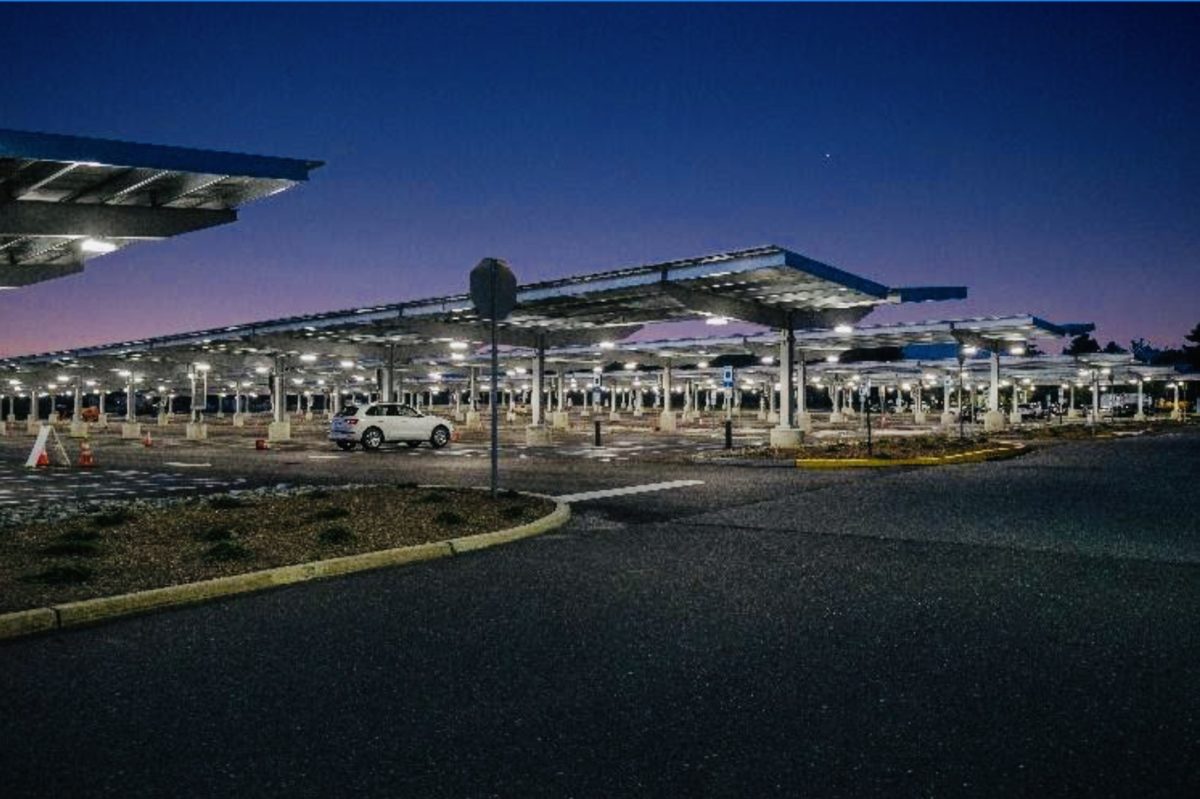Gibraltar Industries said it is buying both TerraSmart and Sunfig in separate deals worth nearly $225 million.
TerraSmart provides screw-based, ground-mount solar racking technology and was acquired for $220 million, according to a statement. Sunfig provides software solutions to optimize solar energy investments through upstream design, performance, and financial modeling. It was acquired for $3.75 million in cash.
Both acquisitions are intended to strengthen Gibraltar’s position as one of the largest turnkey providers in the domestic solar energy market with a portfolio of ground-mount infrastructure, tracker, and design software.
TerraSmart tracking systems are marketed under the GLIDE (fixed-tilt) and TerraTrak (single-axis tracker) brand names. The company is based in Florida and has field operations in Phoenix and Selkirk, New York, and manufacturing in Columbus, Ohio.
TerraSmart is expected to record 2020 revenue and Adjusted EBITDA of around $150-$155 million and $26-$28 million.
Sunfig’s offerings include web-based software that optimize solar project design; APIs that integrate into existing software, tools, and processes; and contract and project development services.
Gibraltar said it expects its solar energy platform within its Renewable Energy and Conservation segment to pass $700 million in organic revenue by 2025 from a pro forma fiscal 2020 revenue base of around $400 million.
Wisconsin to revisit DER rules
Wisconsin regulators plan to 17-year-old rules on customer-owned energy sources. The Public Service Commission in December approved ground rules for revising administrative codes governing distributed generation facilities such as rooftop solar panels, hydroelectric dams and biogas generators. Renewable energy advocates have complained the rules are out of date.
In 2019, Wisconsin had about 100 MW of customer-owned solar, with another 26 MW expected to come online in 2020.
Bay State 2050 energy goals
Massachusetts’ governor said that offshore wind, hydropower and the existing SMART solar program will be essential to achieving emissions reductions that are 45% below 1990 levels by 2030, and that the Commonwealth will work to add an additional 2,000 MW of clean energy.
The SMART Program is a solar incentive program sponsored by Eversource, National Grid and Unitil. SMART is intended to support the development of 1,600 MW of new solar generating capacity.
In his New Year’s Eve statement, the governor also said that Massachusetts will join California in requiring that by 2035, 100% of new light-duty vehicles sold in the Commonwealth are zero emission vehicles. Support in achieving that goal will be offered to build charging infrastructure, including consumer incentives for residential EV charging systems.

Image: David Wagman
The goals were included in two year-end 2020 reports – the Massachusetts 2050 Decarbonization Roadmap Report and an interim 2030 Clean Energy and Climate Plan (CECP) – that detail policies and strategies to reduce emissions and combat climate change. As part of the strategy, Energy and Environmental Affairs Secretary Kathleen Theoharides set an interim 2030 statewide emissions limit of 45% below 1990 levels.
“The costly impacts of climate change are on display in the Commonwealth, making it critical that we take action,” said Governor Charlie Baker in a statement.
The 2050 Roadmap outlines eight potential pathways to Net Zero emissions, including an analysis of potential energy resources, projected energy demand, and the energy supply necessary to meet the demand in all sectors of the economy while meeting the 2050 emissions limit established by the Commonwealth in April 2020.
The Roadmap finds that the most cost-effective, low-risk pathways include a portfolio anchored by a “significant” offshore wind resource, more interstate transmission, widespread electrification of transportation and building heat, and reducing costs by taking action at the point of replacement for energy infrastructure.
(In a related development, Vineyard Wind, a joint venture between Avangrid Renewables and Copenhagen Infrastructure Partners, said in early December that it selected GE as its preferred supplier of wind turbine generators for its proposed 800 MW Vineyard Wind 1 project, the first utility-scale offshore wind installation in the United States. GE would deliver its multi-megawatt Haliade-X turbines for the project.)
The 2050 Roadmap also finds that achieving net zero emissions will deliver a drop in air pollution, particularly in “environmental justice communities currently overburdened with poor air quality,” and savings in health costs of up to $100 million per year by 2030.
The 2030 CECP will help the Commonwealth meet its 2030 emissions limit of 45% below 1990 levels, which will require a reduction in statewide emissions about 19 million metric tons below current levels.
The Commonwealth will also develop a proposal for a new high-efficiency energy code for new residential and commercial buildings as an option for Massachusetts’ Green Communities, and a new Governor’s Commission and Task Force on Clean Heat.
Sungrow notches an inverter milestone
Sungrow said that its cumulative shipment of inverters in the Americas reached 10 GW at the end of 2020. The company delivered inverters to projects in the U.S., Brazil, Chile, Argentina, and Mexico.
North American deliveries totaled 5 GW in 2020, the company said. It also reached a 1 GW milestone in Chile.
Major projects supplied in 2020 include the 200 MW Wright Solar project, one of the largest community solar projects in California. Peninsula Clean Energy has a 25-year power purchase agreement with Wright Solar Park LLC to buy all of the facility’s electricity to power more than 100,000 San Mateo County homes. The solar facility was constructed by Swinerton Renewable Energy and is owned by Centaurus Renewable Energy.
Solar carport
KDC Solar LLC, a unit of CI Renewables LLC, said commercial operations have begun of a 1.6 MW solar carport at CentraState Medical in Freehold, New Jersey. The system will generate around 2.1 million kWh of electricity per year.
Together with a 7 MW ground mount system, commissioned in 2014, and a 3.9 MW solar carport system, commissioned in 2019, CentraState Medical has one of the highest percentages of solar electricity of any hospital in New Jersey. These solar energy systems provide 70% of CentraState’s annual electric requirements. New Jersey-based Altec Building Systems Corp. provided electrical construction support on the most recent project.
This content is protected by copyright and may not be reused. If you want to cooperate with us and would like to reuse some of our content, please contact: editors@pv-magazine.com.









By submitting this form you agree to pv magazine using your data for the purposes of publishing your comment.
Your personal data will only be disclosed or otherwise transmitted to third parties for the purposes of spam filtering or if this is necessary for technical maintenance of the website. Any other transfer to third parties will not take place unless this is justified on the basis of applicable data protection regulations or if pv magazine is legally obliged to do so.
You may revoke this consent at any time with effect for the future, in which case your personal data will be deleted immediately. Otherwise, your data will be deleted if pv magazine has processed your request or the purpose of data storage is fulfilled.
Further information on data privacy can be found in our Data Protection Policy.